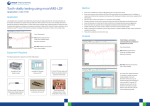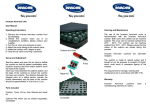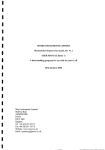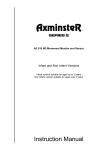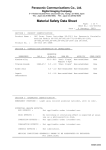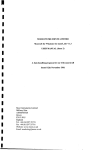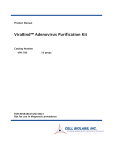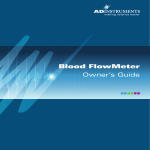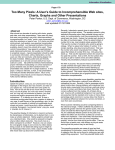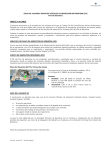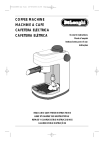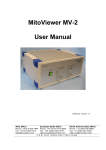Download Skin Perfusion Pressure (SPP) Assessments with
Transcript
innovation in microvascular assessment Skin Perfusion Pressure (SPP) Assessments with the moorVMS-VASC Application note #105 Easy Care Cuff (Inflatable pressure cuff)*. Application Skin Perfusion Pressure (SPP) is the pressure required for restoring microcirculatory blood flow following release of * The cuff used will depend upon patient and limb size e.g. arm, thigh, lower leg etc. carefully controlled occlusion. The measurement of SPP with laser Doppler is a non-invasive test. It has proved useful in the assessment of peripheral arterial disease (PAD) for both critical ischemia (Utsunomiya , 2013, Castronuovo, 1997, Method Castronuovo et al, 1997), and also for the determination of optimal levels for amputation (Tsuji et al, 2008). There are also indications in the literature that SPP measurements are useful indicators for wound healing potential (Yamada et al, 2008), and more recently for the investigation of ischemia over the ischial tuberosity in people with spinal cord injury (Jan et al, • Refer to the Practical Suggestions section of this Application Note for environmental and patient recommendations. • Ensure skin probes are calibrated (See moorVMS-LDF user manual). SPP provides a good indication of the status of the proximal arterial system whilst remaining unaffected by conditions such • Measurements should be made with the patient in the supine position with the limb to be measured at heart level. as arterial wall calcification (commonly seen in diabetic patients with PAD for example). Foot SPP has also been shown to • Apply a small amount of gel to the optic aperture on the VP11sc to improve optical coupling. correlate well to toe pressure and would be useful in situations where toe pressure measurements are not possible, due to • Place a pressure cuff around the limb with the skin probes in the measurement position, under the pressure cuff. • Select your pre-defined test using the moorVMS-VASC PC software (adjust for preferred protocol, see moorVMS-VASC 2013). toe amputation, ulceration or gangrene (Tsai et al, 2000). Test Standardisation The moorVMS-VASC is a dedicated vascular monitoring system which enables simple, rapid and reproducible measurement of SPP. The user friendly PC software enables test procedures to be written which exactly match your requirements enabling standardisation of test procedures in your institution. With the moorVMS-VASC you can be sure test procedures are easily repeatable across your institution Equipment Required The following equipment is needed for this application: user manual. moorVMS-VASC ‘cart optional’ moorVMS-VASC PC software VP11sc low profile optic probe. (eg. K-Y or ultrasound) 1 2 innovation in microvascular assessment Skin Perfusion Pressure (SPP) Assessments with the moorVMS-VASC Application note #105 Easy Care Cuff (Inflatable pressure cuff)*. Application Skin Perfusion Pressure (SPP) is the pressure required for restoring microcirculatory blood flow following release of * The cuff used will depend upon patient and limb size e.g. arm, thigh, lower leg etc. carefully controlled occlusion. The measurement of SPP with laser Doppler is a non-invasive test. It has proved useful in the assessment of peripheral arterial disease (PAD) for both critical ischemia (Utsunomiya , 2013, Castronuovo, 1997, Method Castronuovo et al, 1997), and also for the determination of optimal levels for amputation (Tsuji et al, 2008). There are also indications in the literature that SPP measurements are useful indicators for wound healing potential (Yamada et al, 2008), and more recently for the investigation of ischemia over the ischial tuberosity in people with spinal cord injury (Jan et al, • Refer to the Practical Suggestions section of this Application Note for environmental and patient recommendations. • Ensure skin probes are calibrated (See moorVMS-LDF user manual). SPP provides a good indication of the status of the proximal arterial system whilst remaining unaffected by conditions such • Measurements should be made with the patient in the supine position with the limb to be measured at heart level. as arterial wall calcification (commonly seen in diabetic patients with PAD for example). Foot SPP has also been shown to • Apply a small amount of gel to the optic aperture on the VP11sc to improve optical coupling. correlate well to toe pressure and would be useful in situations where toe pressure measurements are not possible, due to • Place a pressure cuff around the limb with the skin probes in the measurement position, under the pressure cuff. • Select your pre-defined test using the moorVMS-VASC PC software (adjust for preferred protocol, see moorVMS-VASC 2013). toe amputation, ulceration or gangrene (Tsai et al, 2000). Test Standardisation The moorVMS-VASC is a dedicated vascular monitoring system which enables simple, rapid and reproducible measurement of SPP. The user friendly PC software enables test procedures to be written which exactly match your requirements enabling standardisation of test procedures in your institution. With the moorVMS-VASC you can be sure test procedures are easily repeatable across your institution Equipment Required The following equipment is needed for this application: user manual. moorVMS-VASC ‘cart optional’ moorVMS-VASC PC software VP11sc low profile optic probe. (eg. K-Y or ultrasound) 1 2 moorVMS-VASC Simple protocol Set-up Skin Perfusion Pressure. SPP results chart enhances the speed of obtaining required data In the example shown above the following protocol was used: Inflate pressure automatically to 180 mmHg and hold for 19 seconds, controlled deflation at rate of 5 mmHg/s, Flux was constantly monitored and is also shown on the chart. Yellow and blue lines indicate inflation, holding, deflation and abort markers. The site, target pressure and deflation rate are displayed in the bottom right info box. SPP is calculated when the Flux returns to 1.5 x biological zero which is shown by the SPP marker in the above figure (indicated by the vertical red line). A different SPP detection point can be selected from the Report Design. You can also measure SPP manually by moving the red line. Practical Suggestions Microvascular blood flow can be affected by many things. The following practical suggestions are provided as a guide and are not exhaustive: • Clinically user friendly software aims to help standardise test procedures/protocols at your institution. Perform measurements in a quiet room whilst maintaining a comfortable temperature (typically 22°C). Ensure the patient is acclimatised to the room temperature for 30 minutes prior to measurements. Analysis • Patients should avoid caffeine, high salt food, alcohol, vigorous exercise, and smoking for 24 hours prior to the study. • During measurements ask the patient to breathe normally. Coughing, talking and yawning can all affect microvascular blood flow readings. The SPP report contains the SPP charts in addition to the following statistical information: • The patient should be in a comfortable, relaxed position and avoid movement during all measurements. • Site • Flux ch • SPP (mm Hg) • Pressure ch • Flux (PU) • Average • Flux/BZ • Press calc Contact us for Application Notes for: Post Occlusion Reactive Hyperaemia (PORH), Toe Pressure (TP), Pulse Volume (PV) • Time (hh:mm:ss) • Mean SPP (mm Hg) and Ankle-Brachial Pressure Index (ABPI) measurements with the moorVMS-VASC. • Deflation (mm Hg/s) Related Fields Publications Castronuovo J. J. (1997) Diagnosis of critical limb ischemia with skin perfusion pressure measurements. The Journal of Vascular 3 4 moorVMS-VASC Simple protocol Set-up Skin Perfusion Pressure. SPP results chart enhances the speed of obtaining required data In the example shown above the following protocol was used: Inflate pressure automatically to 180 mmHg and hold for 19 seconds, controlled deflation at rate of 5 mmHg/s, Flux was constantly monitored and is also shown on the chart. Yellow and blue lines indicate inflation, holding, deflation and abort markers. The site, target pressure and deflation rate are displayed in the bottom right info box. SPP is calculated when the Flux returns to 1.5 x biological zero which is shown by the SPP marker in the above figure (indicated by the vertical red line). A different SPP detection point can be selected from the Report Design. You can also measure SPP manually by moving the red line. Practical Suggestions Microvascular blood flow can be affected by many things. The following practical suggestions are provided as a guide and are not exhaustive: • Clinically user friendly software aims to help standardise test procedures/protocols at your institution. Perform measurements in a quiet room whilst maintaining a comfortable temperature (typically 22°C). Ensure the patient is acclimatised to the room temperature for 30 minutes prior to measurements. Analysis • Patients should avoid caffeine, high salt food, alcohol, vigorous exercise, and smoking for 24 hours prior to the study. • During measurements ask the patient to breathe normally. Coughing, talking and yawning can all affect microvascular blood flow readings. The SPP report contains the SPP charts in addition to the following statistical information: • The patient should be in a comfortable, relaxed position and avoid movement during all measurements. • Site • Flux ch • SPP (mm Hg) • Pressure ch • Flux (PU) • Average • Flux/BZ • Press calc Contact us for Application Notes for: Post Occlusion Reactive Hyperaemia (PORH), Toe Pressure (TP), Pulse Volume (PV) • Time (hh:mm:ss) • Mean SPP (mm Hg) and Ankle-Brachial Pressure Index (ABPI) measurements with the moorVMS-VASC. • Deflation (mm Hg/s) Related Fields Publications Castronuovo J. J. (1997) Diagnosis of critical limb ischemia with skin perfusion pressure measurements. The Journal of Vascular 3 4 Technology, 21(3), pp 175-179. Castronuovo J. J., Adera, H. M., Smiell J. M., Price, R. (1997) Skin perfusion pressure measurement is valuable in the diagnosis of critical limb ischemia. Journal of Vascular Surgery, 26(4), pp 629-637. Jan YK, Liao F., Jones M. A., Rice L.A., Tisdell T. (2013) Effect of Durations of Wheelchair Tilt-in-Space and Recline on Skin Perfusion Over the Ischial Tuberosity in People with Spinal Cord Injury. Archives of Physical Medicine and Rehabilitation, 94(4), pp 667-672. Castronuovo J. J., Carter S. A. (2000) Skin perfusion pressure of the foot is a good substitute for toe pressure in the assessment of limb ischemia. Journal of Vascular Surgery, 32(1), pp 32-36. Tsuji, Y., Hiroto, T., Kitano, I., Tahara, S., Sugiyama, D. (2008) Importance of skin perfusion pressure in treatment of critical limb ischemia. Wound Research, Apr 2008 Issue 4. Utsunomiya M., Nakamura M., Nagashima Y., Sugi K. (2013) Predictive value of skin perfusion pressure after endovascular therapy for wound heal of critical limb ischemia. Journal of the American College of Cardiology, Volume 61, Issue 10, Supplement 12 March 2013, pp E1805. Yamada, T., Ohta, T., Ishibashi, H., Sugimoto, I., Iwata, H., Takahashi, M., Kawanishs, J. (2008) Clinical reliability and utility of skin perfusion pressure measurement in ischemic limbs – Comparison with other non-invasive diagnostic methods. Journal of Vascular Surgery, 47(2), pp 318-323. Further Reading www.moor.co.uk – information about moorVMS-VASC and available probes and pressure cuffs. moorVMS-LDF user manual for instrument operation and cleaning and handling of optical probes. Please feel free to consult [email protected] for further advice or support with issues not covered in this application note and for details of other application notes using the moorVMS-VASC system. Important Disclaimer: This information is provided to further clinical research into diagnostic capabilities of laser Doppler. The moorVMS-VASC is CE marked for human use but not specifically for clinical diagnosis of SPP assessments. Calibrated equipment with a current service record should only be used. Notes innovation in microvascular assessment Moor Instruments Ltd Millwey Axminster Devon EX13 5HU UK tel +44 (0)1297 35715 fax +44 (0)1297 35716 email [email protected] website www.moor.co.uk Issue 2 5 6 Technology, 21(3), pp 175-179. Castronuovo J. J., Adera, H. M., Smiell J. M., Price, R. (1997) Skin perfusion pressure measurement is valuable in the diagnosis of critical limb ischemia. Journal of Vascular Surgery, 26(4), pp 629-637. Jan YK, Liao F., Jones M. A., Rice L.A., Tisdell T. (2013) Effect of Durations of Wheelchair Tilt-in-Space and Recline on Skin Perfusion Over the Ischial Tuberosity in People with Spinal Cord Injury. Archives of Physical Medicine and Rehabilitation, 94(4), pp 667-672. Castronuovo J. J., Carter S. A. (2000) Skin perfusion pressure of the foot is a good substitute for toe pressure in the assessment of limb ischemia. Journal of Vascular Surgery, 32(1), pp 32-36. Tsuji, Y., Hiroto, T., Kitano, I., Tahara, S., Sugiyama, D. (2008) Importance of skin perfusion pressure in treatment of critical limb ischemia. Wound Research, Apr 2008 Issue 4. Utsunomiya M., Nakamura M., Nagashima Y., Sugi K. (2013) Predictive value of skin perfusion pressure after endovascular therapy for wound heal of critical limb ischemia. Journal of the American College of Cardiology, Volume 61, Issue 10, Supplement 12 March 2013, pp E1805. Yamada, T., Ohta, T., Ishibashi, H., Sugimoto, I., Iwata, H., Takahashi, M., Kawanishs, J. (2008) Clinical reliability and utility of skin perfusion pressure measurement in ischemic limbs – Comparison with other non-invasive diagnostic methods. Journal of Vascular Surgery, 47(2), pp 318-323. Further Reading www.moor.co.uk – information about moorVMS-VASC and available probes and pressure cuffs. moorVMS-LDF user manual for instrument operation and cleaning and handling of optical probes. Please feel free to consult [email protected] for further advice or support with issues not covered in this application note and for details of other application notes using the moorVMS-VASC system. Important Disclaimer: This information is provided to further clinical research into diagnostic capabilities of laser Doppler. The moorVMS-VASC is CE marked for human use but not specifically for clinical diagnosis of SPP assessments. Calibrated equipment with a current service record should only be used. Notes innovation in microvascular assessment Moor Instruments Ltd Millwey Axminster Devon EX13 5HU UK tel +44 (0)1297 35715 fax +44 (0)1297 35716 email [email protected] website www.moor.co.uk Issue 2 5 6







